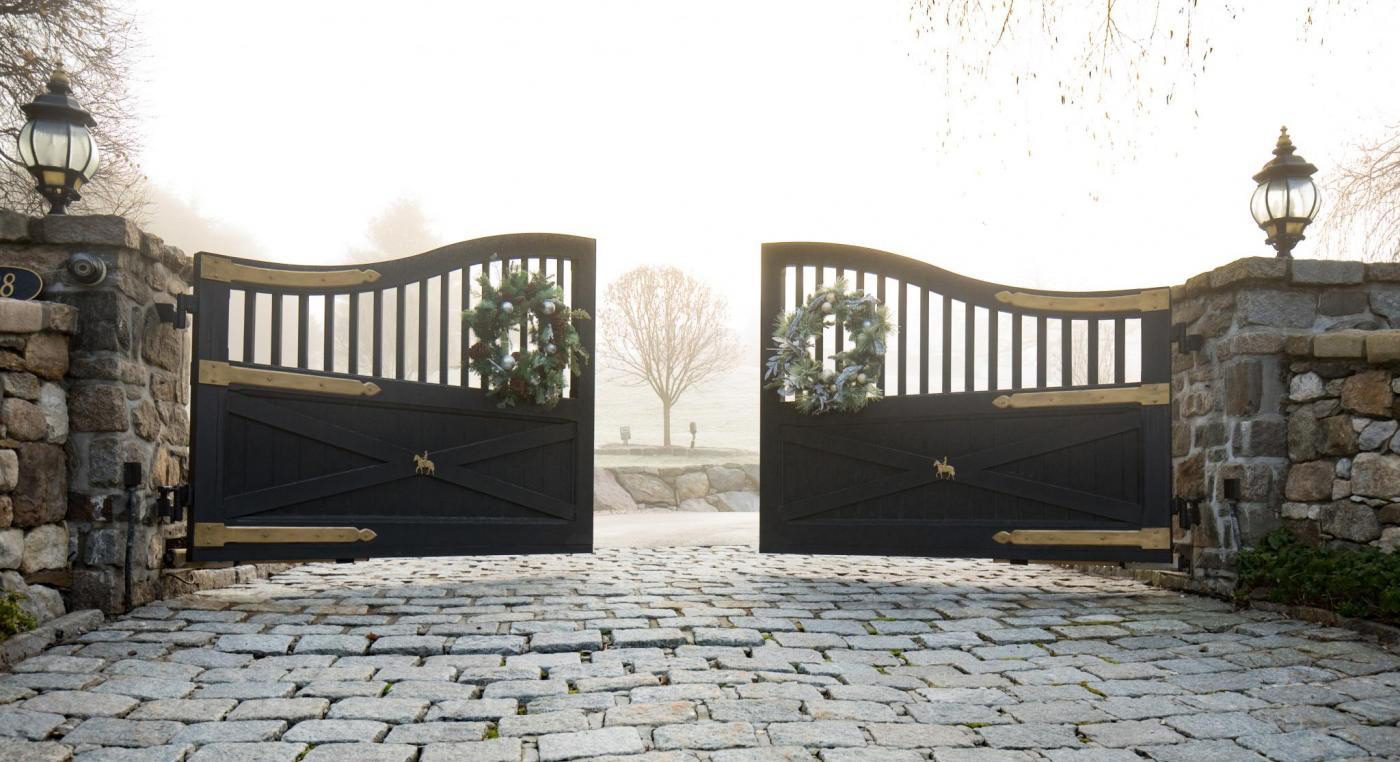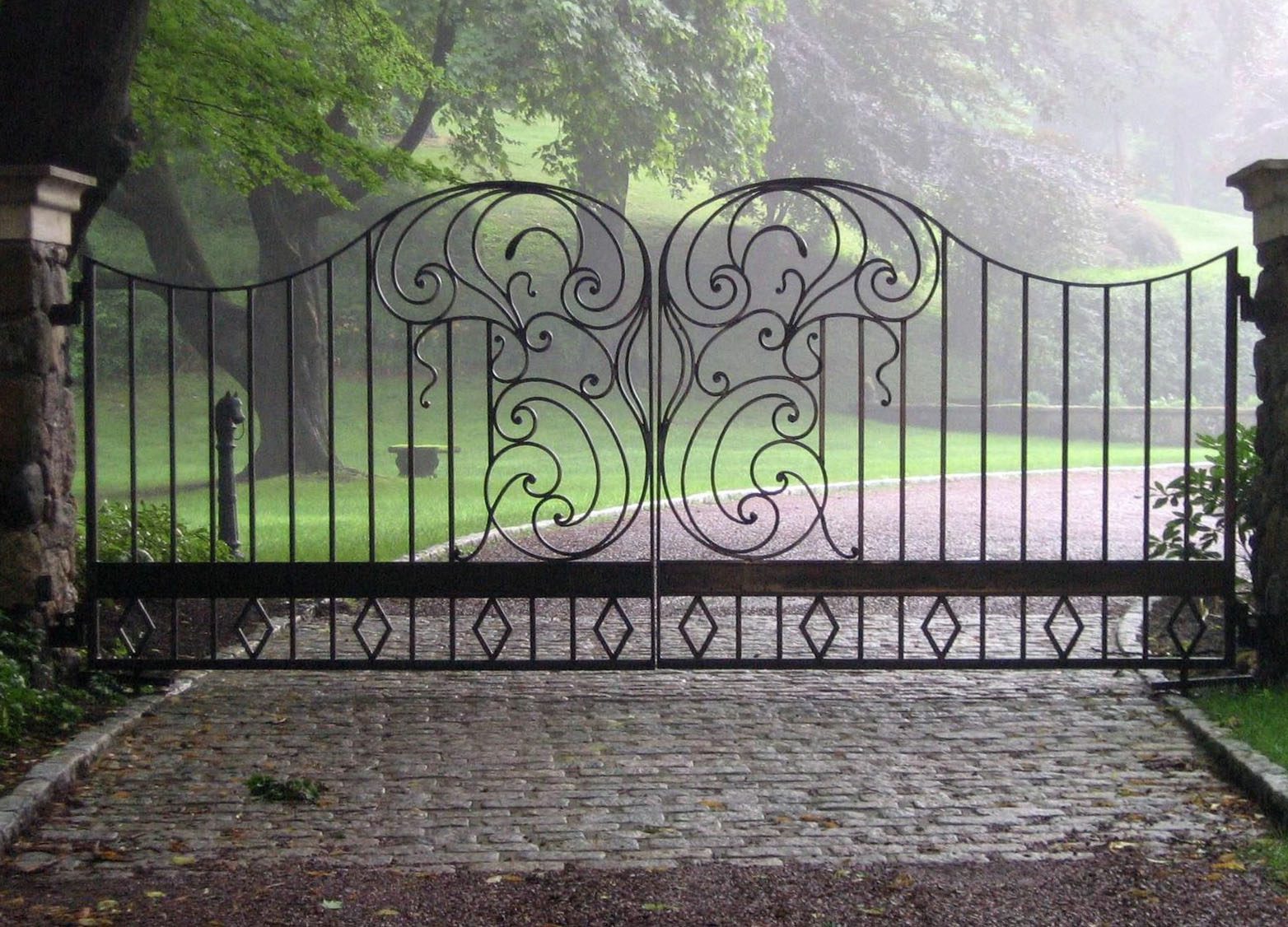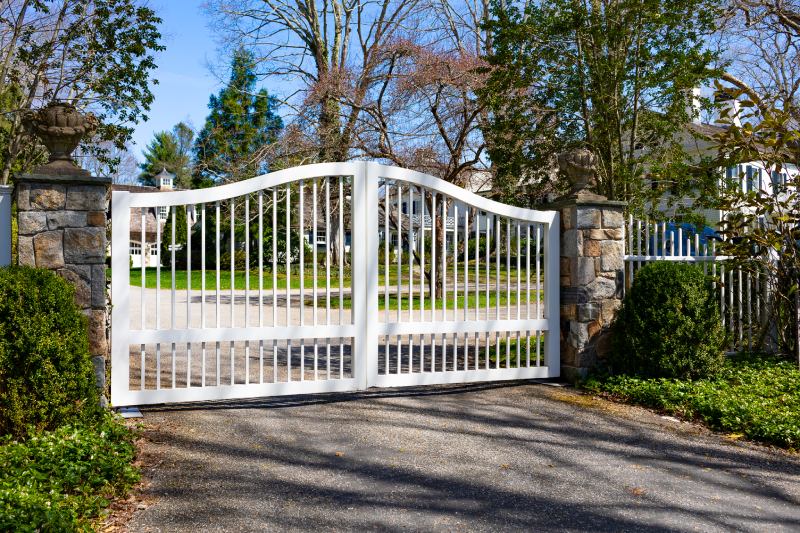Driveway lights serve an important function: not only do they brighten up your home and express your personal style, they add an important safety and security feature. Whether you’ve got a brand new driveway gate or a decades-old one, good lighting deters theft and helps prevent trips and falls. This blog will help you pick the best lights for your driveway.
How Do You Illuminate a Driveway?
There are three main approaches to illuminating a driveway:
- Installing light fixtures on top of the gate posts or pillars – This adds another architectural element to your driveway entrance. Gate pillar placement works especially well if you’re going for a traditional or romantic feel.
- Hanging lights on the front faces of the pillars – This provides good downlight for illuminating the path, and can be easier to install. Hanging lights work well with a transitional aesthetic.
- Installing lights on the ground – This approach (often called up-lighting) creates a dramatic effect that’s sleek and modern.
No matter your overall approach, fixtures are available in a wide array of styles and finishes to suit your preference.
To further customize your drive, we can also integrate lighting directly into the actual gate pillars for a unique and seamless look, as in the photo below.
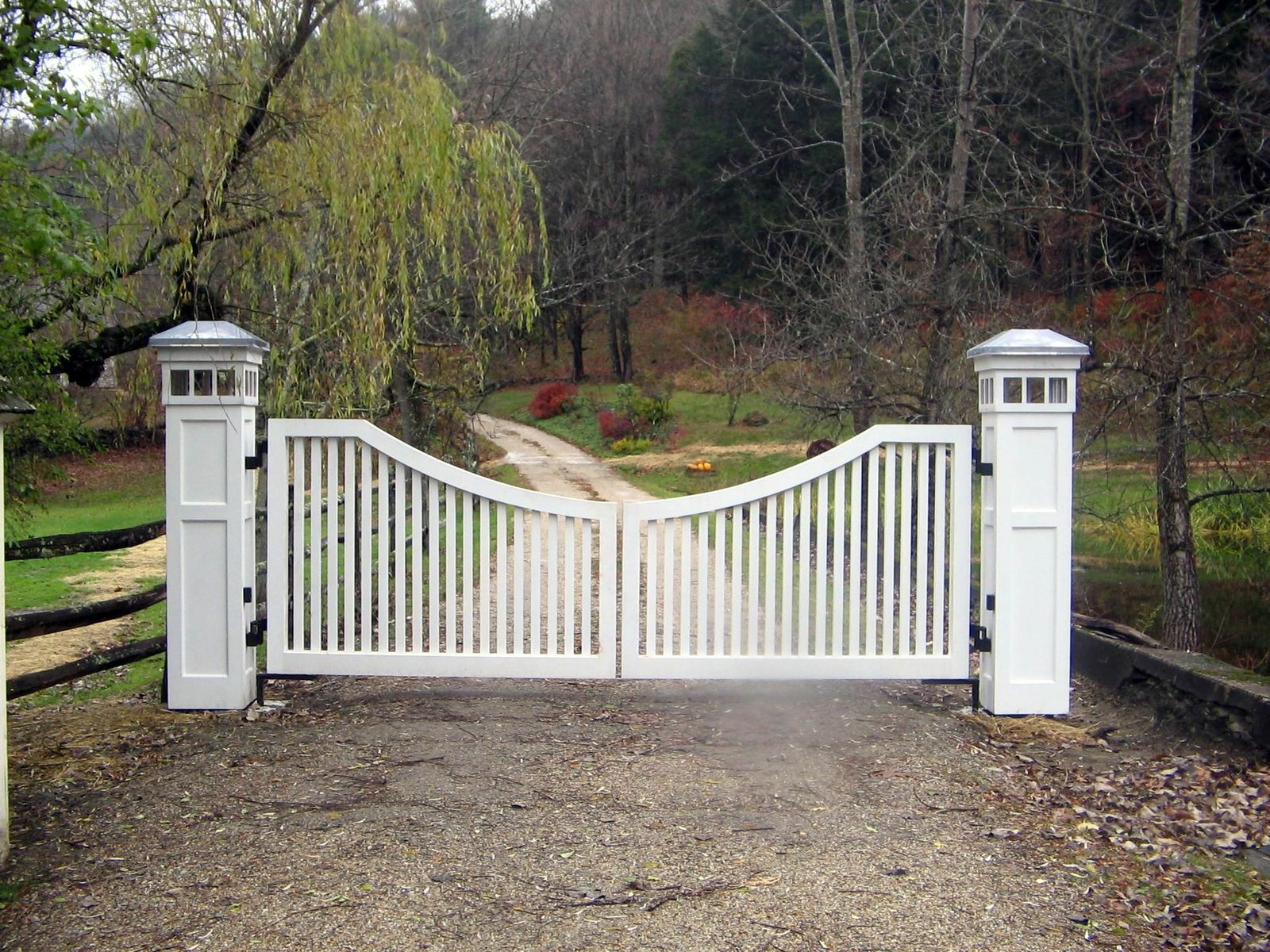
What Size Should My Driveway Lights Be?
The answer depends on your specific property. You’ll want to ensure that the size of the light fixture balances well with the pillar size and gate width. Consider the proportions. If a fixture is too small in relation to the pillars and gate, it can get lost in the rest of the design and may not provide sufficient light.
You should also consider the proportions of the gate, including its width and the size of the pillars on either side, as well as any fencing or structures that might affect the overall aesthetic impression. Pay attention to the distance between lights as well – the more closely the lights are spaced together, the less bright they need to be to keep the area adequately illuminated.
Driveway gates and lights are another opportunity for you to express yourself; see our blog post on how to decorate your gate for the changing seasons.
How Far Should I Space Driveway Lights?
If you opt to line the perimeter of your driveway, avoid the runway look by placing lights far enough apart (at least 10 feet away from each other is a good guideline, although each circumstance is different). Balance is key – avoid too much or too little light.
Aside from looking welcoming and attractive, driveway lights should make parking, entering, and exiting easier. To that end, consider adding lights to gently illuminate any changes in the driveway’s direction or any potential obstacles, such as trees or boulders.
Tri State Gate works directly with you to determine the exact right spacing for your driveway lights.
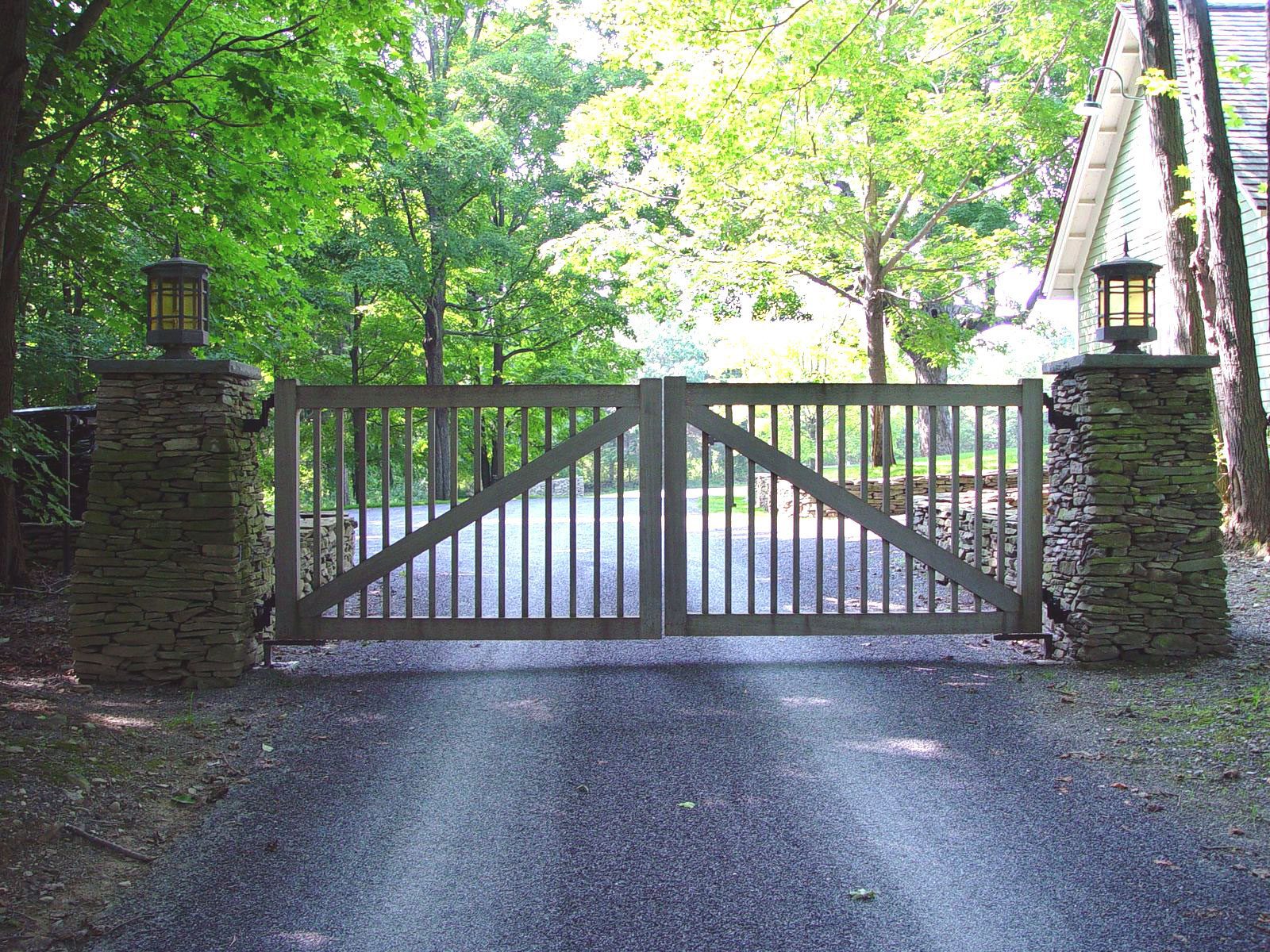
What Is the Best Wattage for Driveway Lights?
The best wattage for driveway lights depends on the type of lights you’re using, the size of your driveway, the desired level of brightness, and, lastly, on any local regulations limiting outdoor residential lighting. For LED lights, we recommend:
- For Post Lights: 40-80 watts
- For Path Lights: 40 watts or lower
- For Floodlights: 50-150 watts
How Do I Maintain My Driveway Lights?
Once you’ve found the perfect driveway lighting for you, regular maintenance will help keep your lights shining bright for as long as possible. Here are some maintenance tips:
- Invest in (or upgrade to) LED bulbs, if you haven’t already. They’re more durable, energy-efficient and longer-lasting.
- Clean and polish light fixtures regularly to prevent oxidation and maximize light output. Turn the power off first! Then use a soft, dry cloth for loose dirt, and a damp cloth with mild soapy water for tougher stains. Make sure your fixture is completely dry before turning the power back on.
- To ensure proper operation, test your GFCI and AFCI breakers regularly. Look for any frayed wires, loose connections, or signs of corrosion. These can be safety hazards and hinder proper functioning. If you’re not comfortable doing this yourself, reach out to a licensed electrician.
Before winter, check for any loose parts or damage that might worsen in harsh weather. You might also consider using weatherproof covers for added protection during heavy snowfall or rain.
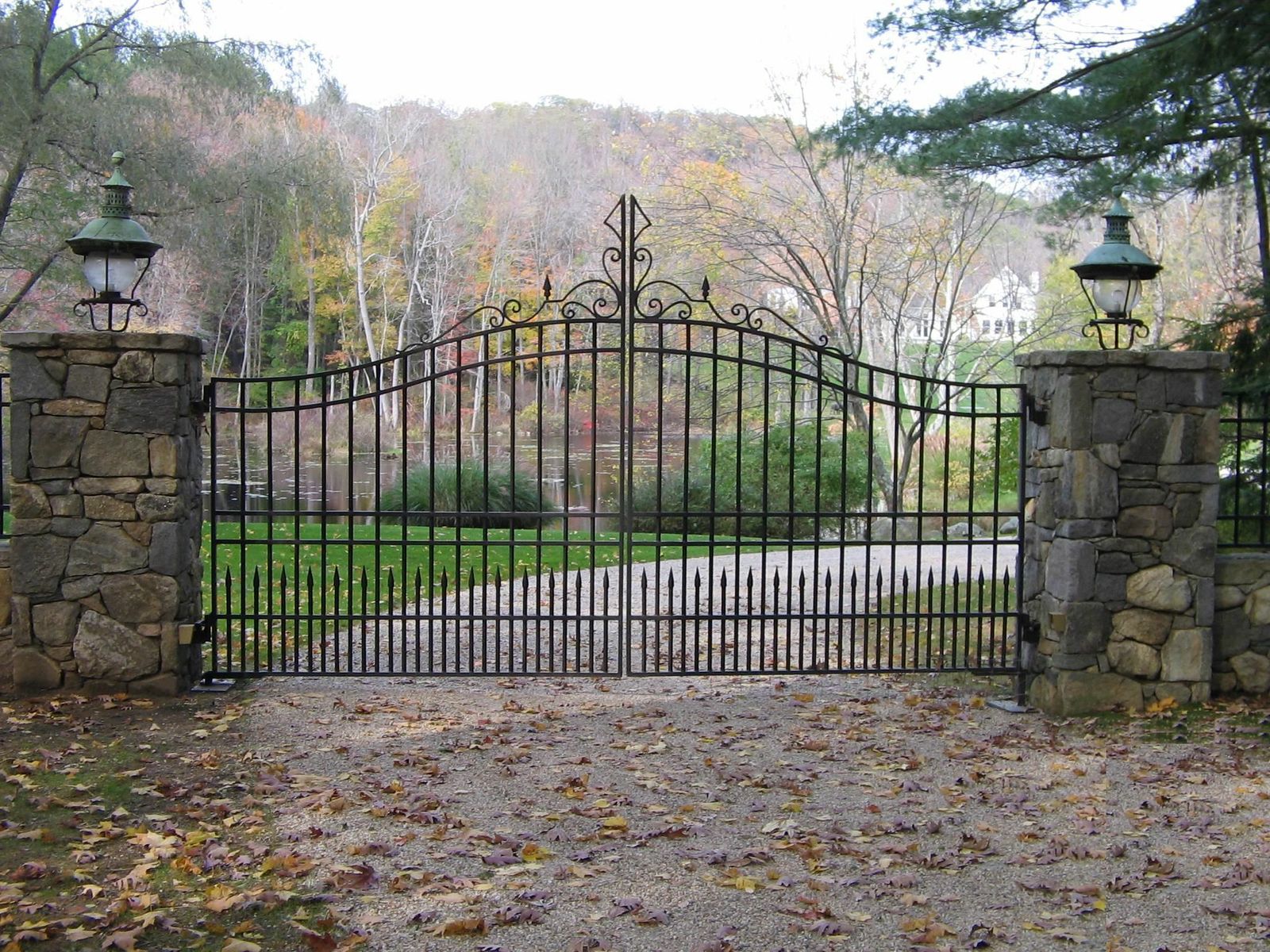
Free, On-Site Consultations
If you’re looking for repair or installation for a driveway gate in the Connecticut, New York, or New Jersey area, give Tri State Gate a call at 914-244-0018 or contact us online. We offer free, on-site consultations, whether for new gate installation, existing gate automation, or driveway gate repair for both residential properties and commercial businesses.

